It has been 5 months since Gogamegeek sent me the GKD Plus Classic to review. Whilst it was a lovely looking handheld, it just missed out when it came to raw power and performance.
Well, Game Kiddy are back with the Pixel, a remarkably well-made mini-handheld. But has it been improved when it comes to the performance?
For a mini-handheld, it’s only going to be able to do so much, so let’s look at the specifications first.
Pixel Specifications:
- Ingenic X1830 CPU
- 128MB RAM
- 2.4″ IPS Display (320 x 240)
- 1300MAH Battery (3 – 4 Hours)
- USB-C Charging
- Headphone Jack
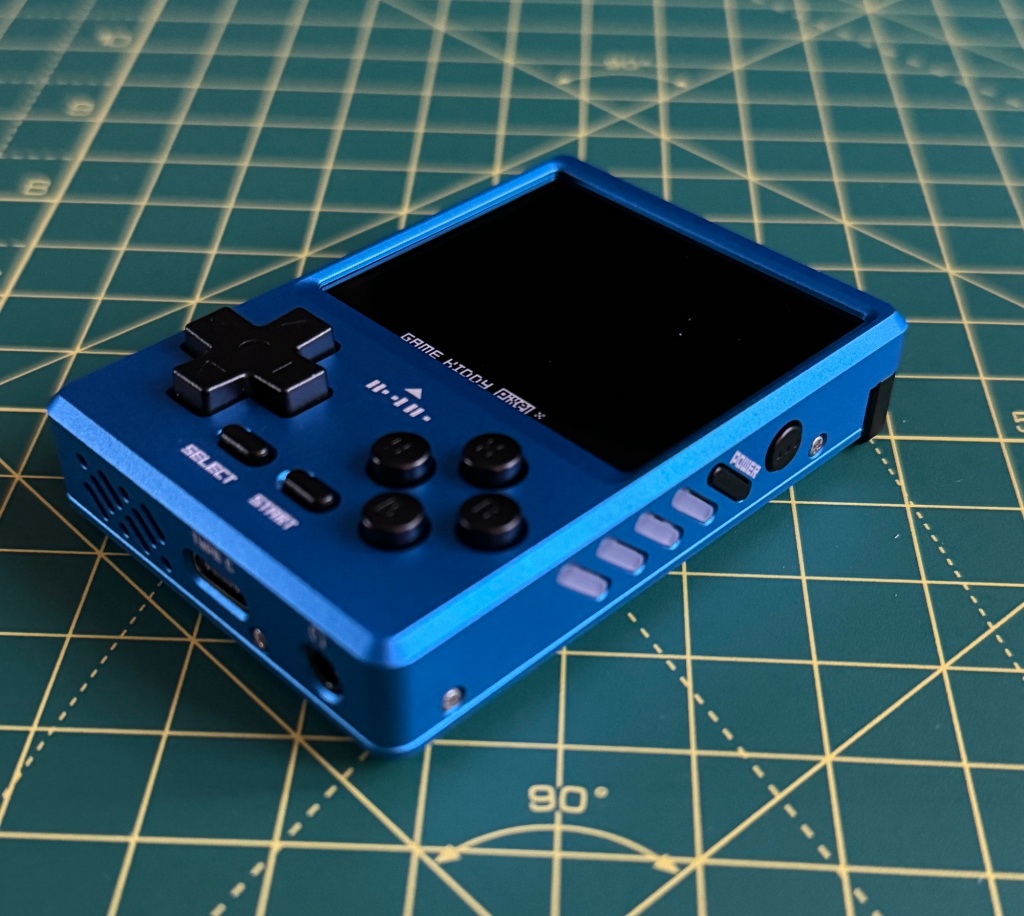
The Game Kiddy Pixel is slightly larger than a matchbox and comes in 5 stunning metallic colours. It’s crafted in a full metal shell, has a 2.4” IPS display (320 x 240), four shoulder buttons, headphone jack and 1300 MAH’s of battery charged with USB-C.
The Game Kiddy Pixel is powered by an Ingenic X1830 CPU and has 128MB of RAM; this might not sound like much, but for lower end emulation up to and including PS1, it works great.
Design & Build Quality
The bright 2.4” IPS display is very bright and has a minimalistic bezel, which looks great. Coupled with the metal shell, it’s probably one of the better looking designs of any miniature handheld.
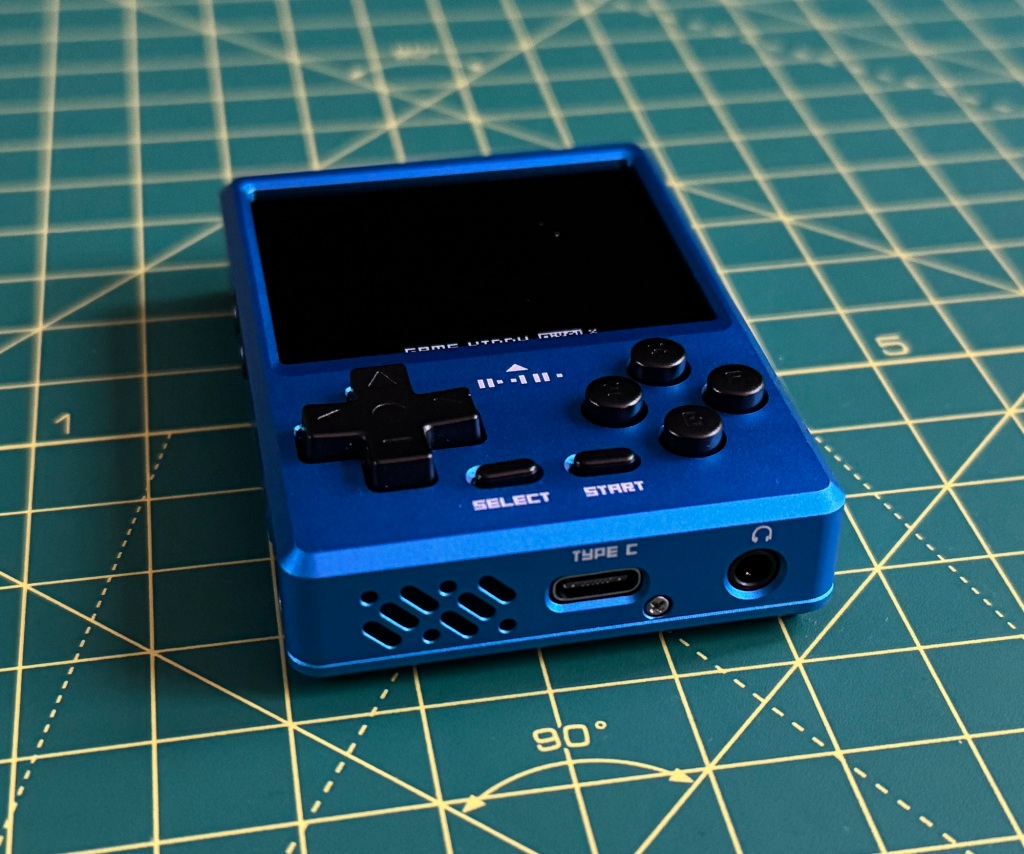
Viewing angles could have been a little better, but if you are looking at it head on, then you won’t have any issues. This is a very minor criticism, and the overall image quality is very good.

Below the screen there are some nice, chunky buttons. The D-pad is very good and sits high enough out of the shell, allowing for a good amount of directional travel and clickiness to it.
Action buttons are small and okay, though they didn’t feel as sturdy as the D-pad. This doesn’t impact on the performance though, but I wish they had been of a little better quality.
Start and Select buttons are as you would expect; they are smaller and feel better quality than the rest of the controls.
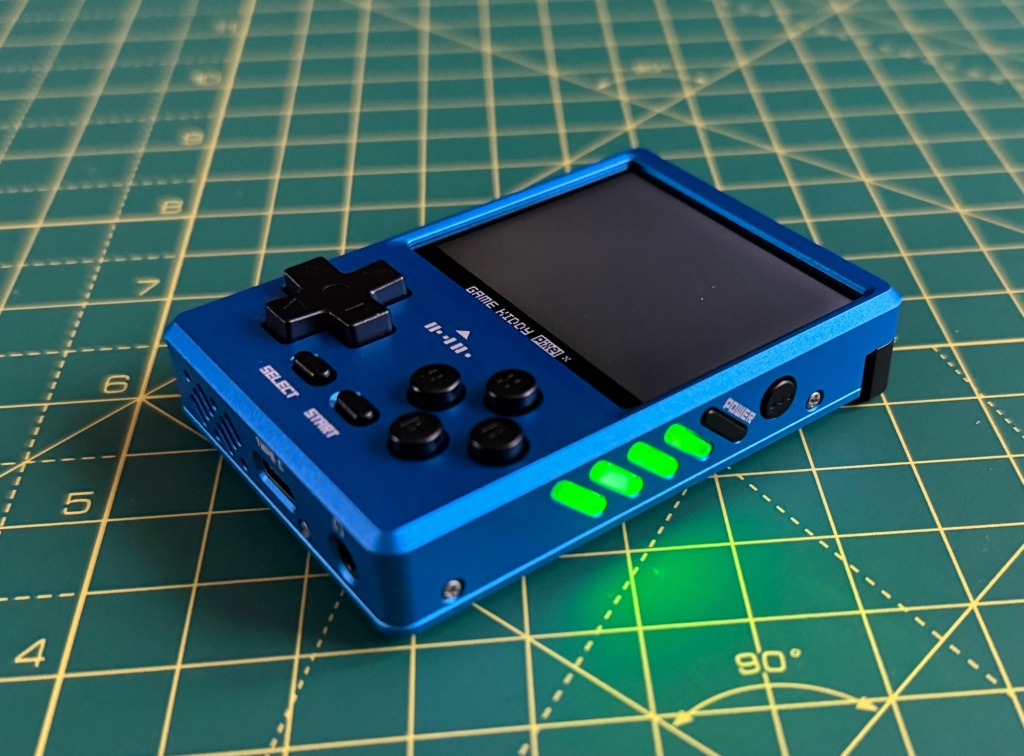
At the bottom of the Pixel is a USB-C charging port, a small speaker that is surprisingly loud, and a headphone jack, which was a nice addition and that you rarely notice.
One thing I did like were the charging/battery lights down the side of the Pixel, which shows the battery level. The design is also a nice feature, instead of just an LED light.
Above the battery level is the Power and Menu buttons. Again, the buttons have a nice feel to them, and to switch the Pixel off, you simply hold the down power button for a few seconds.
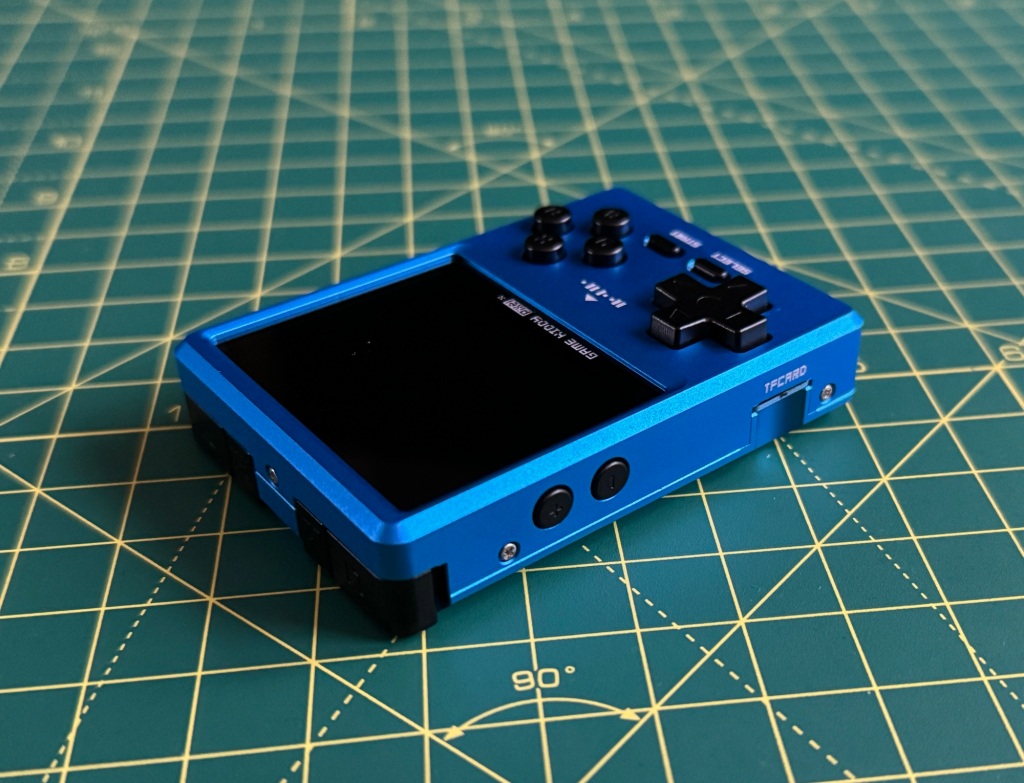
You also get four shoulder buttons at the top of the Pixel, which are very small, making it difficult to press R2/L2 buttons due to how close they are to each other. This isn’t a major issue as most of the games you will be playing won’t use those buttons.
You then have the volume button and an SD card slot on the left-hand side of the Pixel. All in all, you get a lot of buttons on this little handheld, but overall, the design of the Pixel is brilliant. Its portability is another great selling point as it will easily fit into any jeans pocket.

My only major criticism with the Game Kiddy Pixel is that, due to its size, this isn’t the most comfortable of gaming devices to use for extended gaming sessions. This is no criticism towards Game Kiddy but rather against miniature handhelds in general. Any more than an hour and your fingers start to ache.
Not only that, but due to the small size of the screen, it’s really difficult to sit staring at it for too long without getting eye strain after a while. This is just one of the downfalls of owning such a small gaming handheld. But used in shorter spells, you should be okay.
Battery-wise, you will get around 4 hours of game time on a full charge, which is fairly decent for a handheld of this size. The metal shell does warm up slightly after a little while, but it’s nothing that should cause the player any concern.

Sound-wise, the speaker is just okay. It can go quite loud, but put the volume up too high, and you will start to get some distortion. The sound quality is very tinny too, but again, for a handheld of this size, it’s going to be expected.
The Game Kiddy Pixel has a new IUX interface, which I’ve never seen on a handheld before. You can choose from a number of different themes to use, but they are all fairly basic yet simple to use. You will find folders for your games, another for emulators, File Manager and then Settings.
Emulation Performance

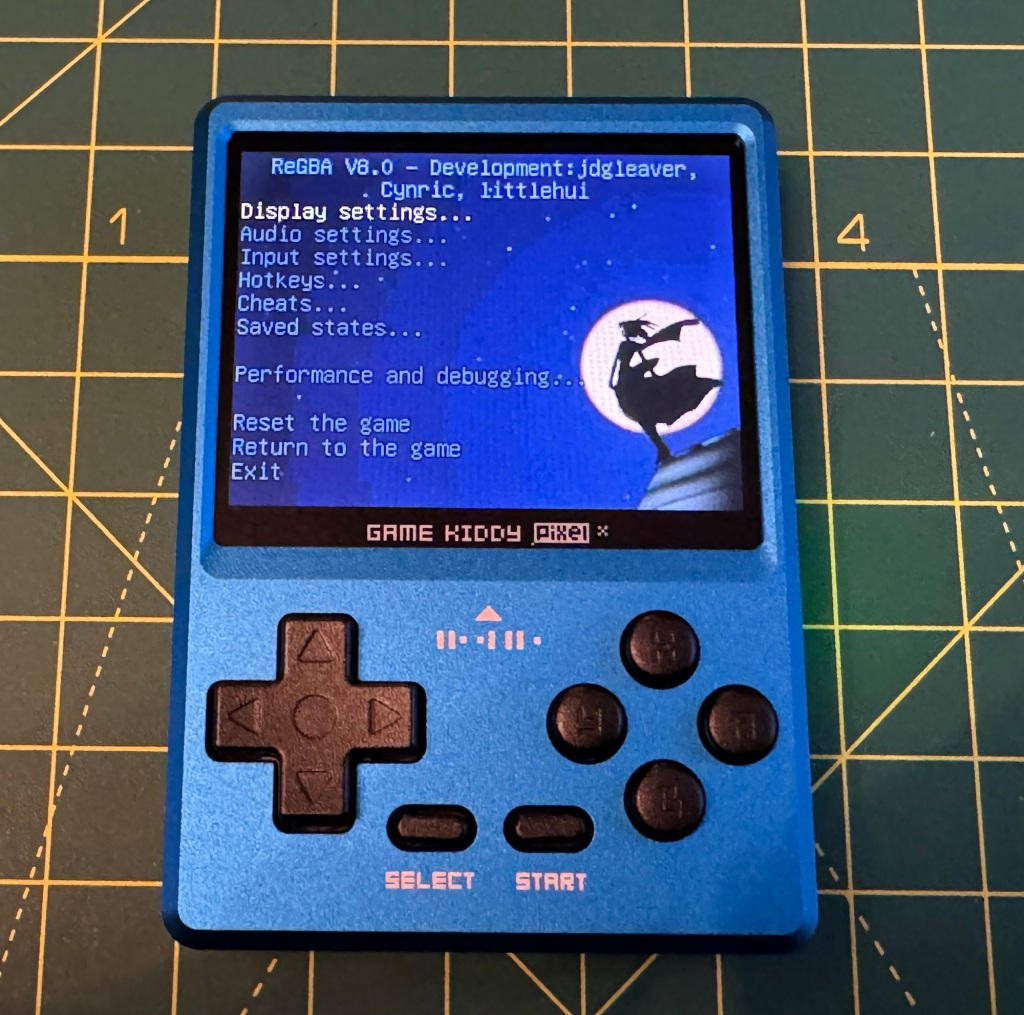
Once you choose which game you want to play, a simple press of the Menu button will bring up emulator-specific options. Here you can save/load your game state, change the aspect ratio, and in some cases, activate cheat codes, depending on which console you’re playing.
I found this to be a great little feature and very simple and quick to use. You can also speed up the game you’re playing too. Options do vary though, so don’t expect to use cheats on every game.


Performance-wise, the Game Kiddy Pixel can play everything up to PS1, and that’s it. That’s right, no PSP or Dreamcast emulation here. But to be fair, on such a small screen, the limitation of playing up to PS1 is totally understandable and expected.
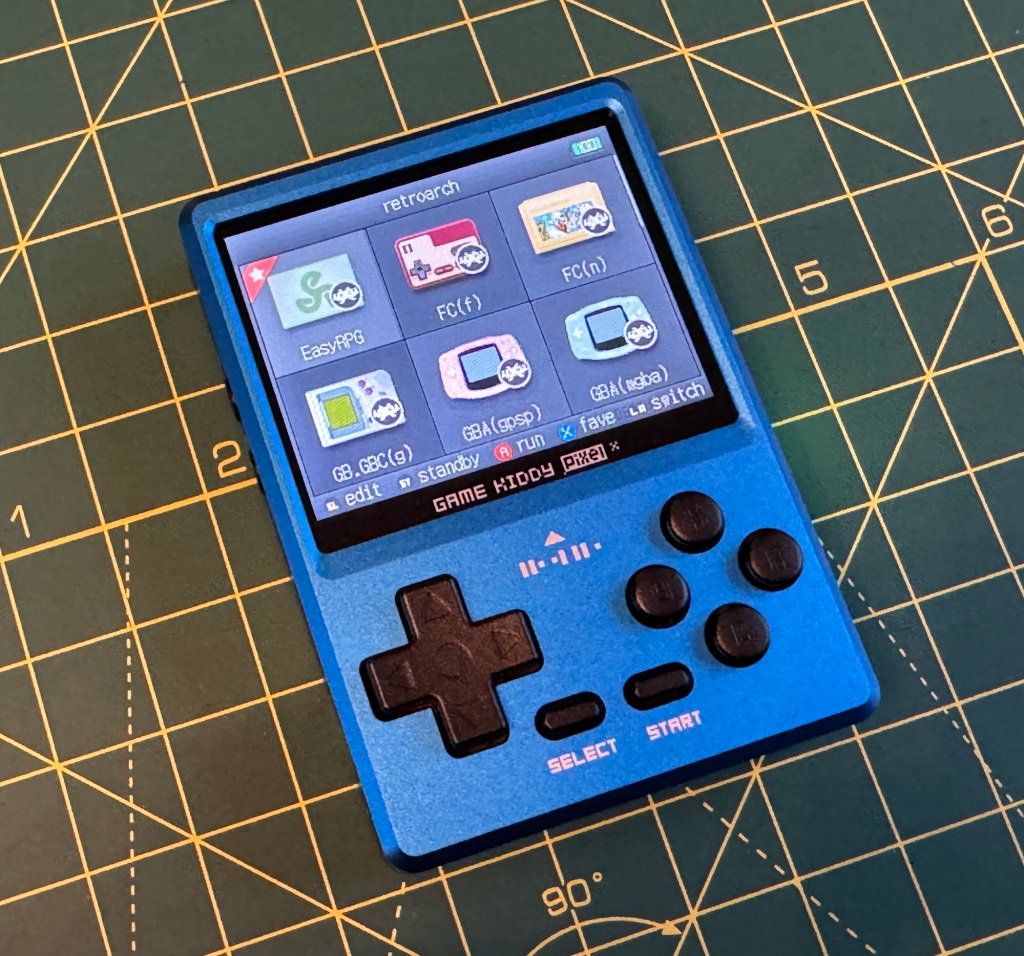
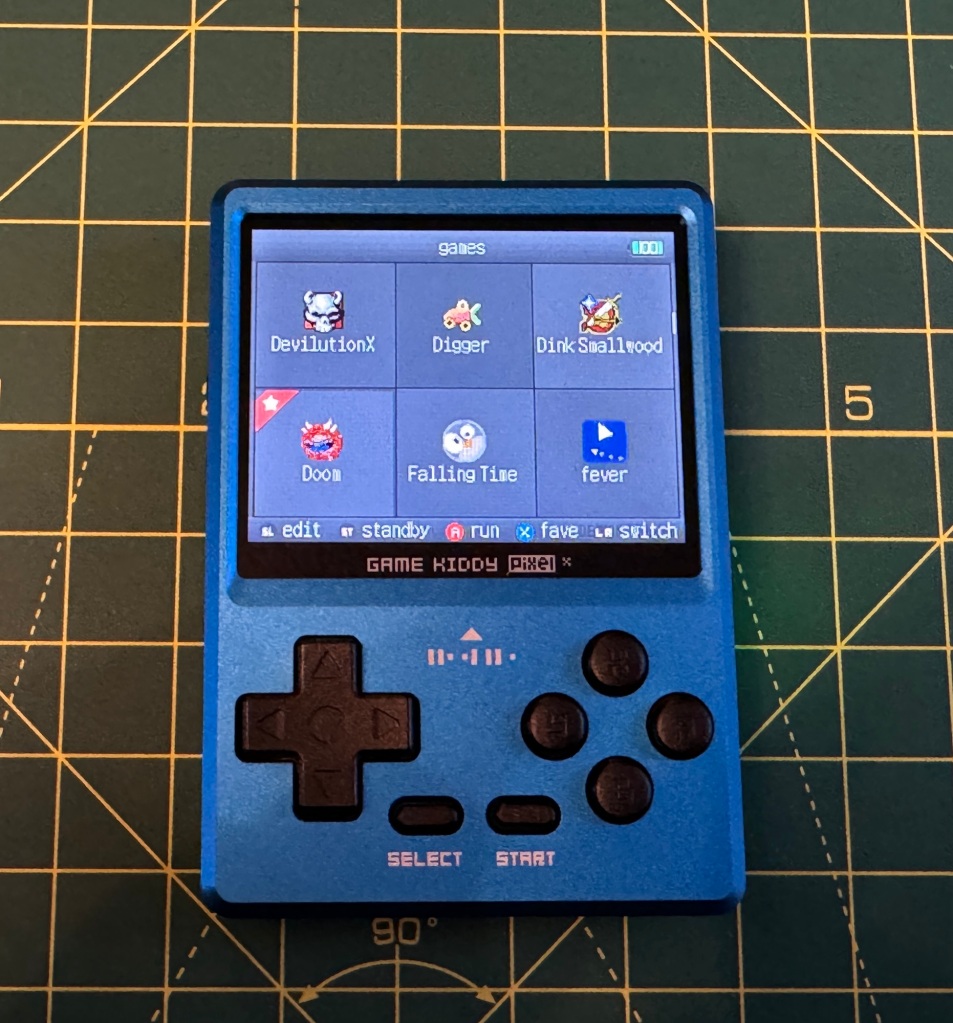
PS1 performance is brilliant, everything I tried played perfectly, frame rates never dropped and no glitching with the sound, which you would sometimes find when emulators are struggling.
Gogamegeek sent me the 64GB metallic blue version, which comes with around 8,000 games. This is a large number of games for such a small handheld. The likes of Game Boy, Game Boy Advance, SNES, Mega Drive and MAME are all included and play perfectly.
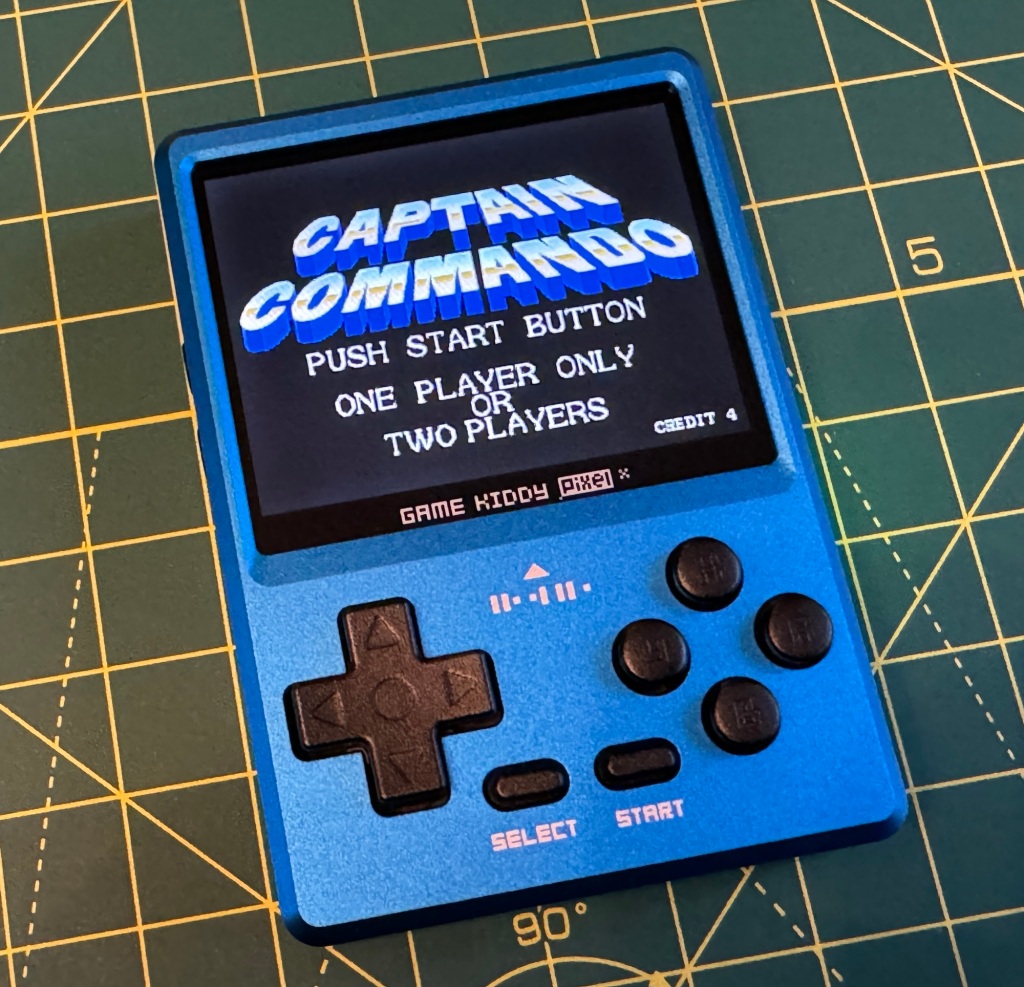
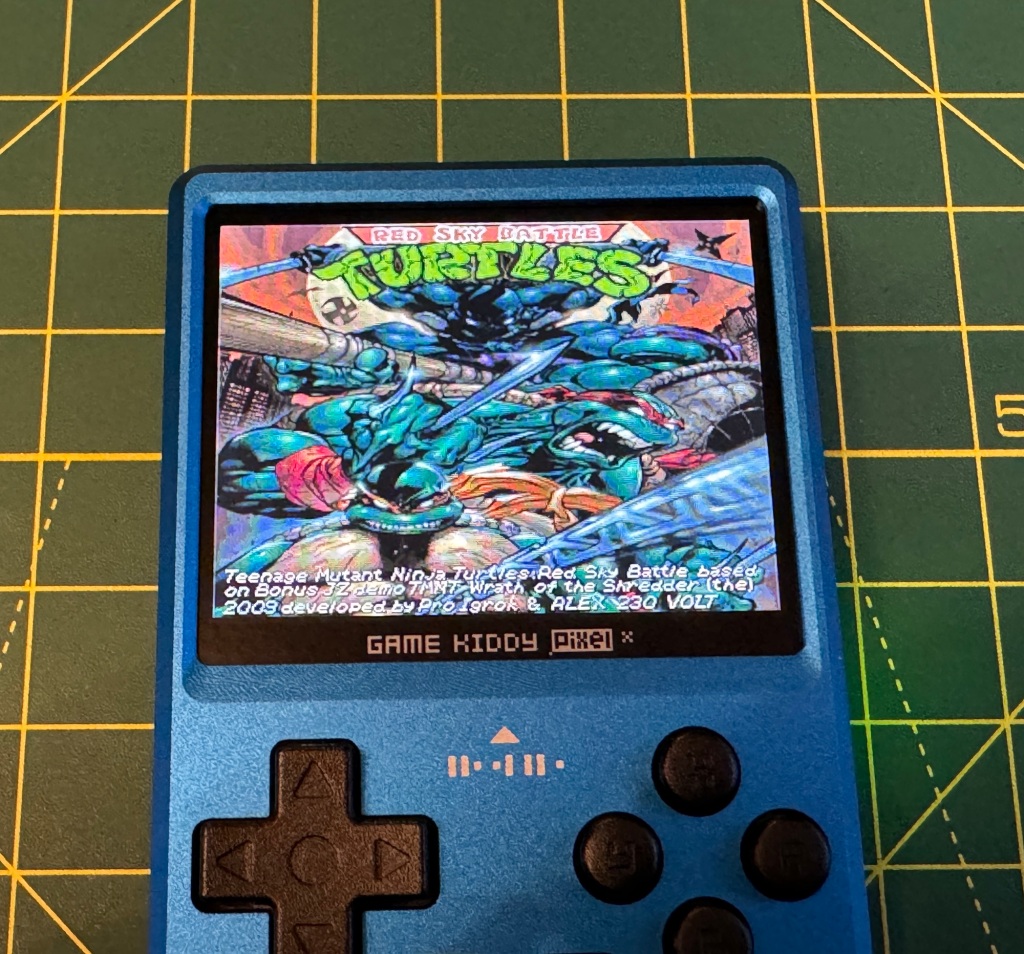
Final Thoughts
Overall, the Game Kiddy Pixel feels very premium. The excellent quality metal shell gives it a nice weight when held and will no doubt offer some great protection.
This is probably the best gaming handheld that Game Kiddy has released so far. It’s not perfect, and no mini-handheld is going to be perfect, but what you get here is a very versatile, premium entry into the mini-gaming world. I love the various colours, with the blue being my favourite. I can highly recommend the Pixel to anyone wanting a super portable device, and I hope Game Kiddy continue to release handhelds of this quality going forward.
You can buy the Game Kiddy Pixel direct from Gogamegeek here



